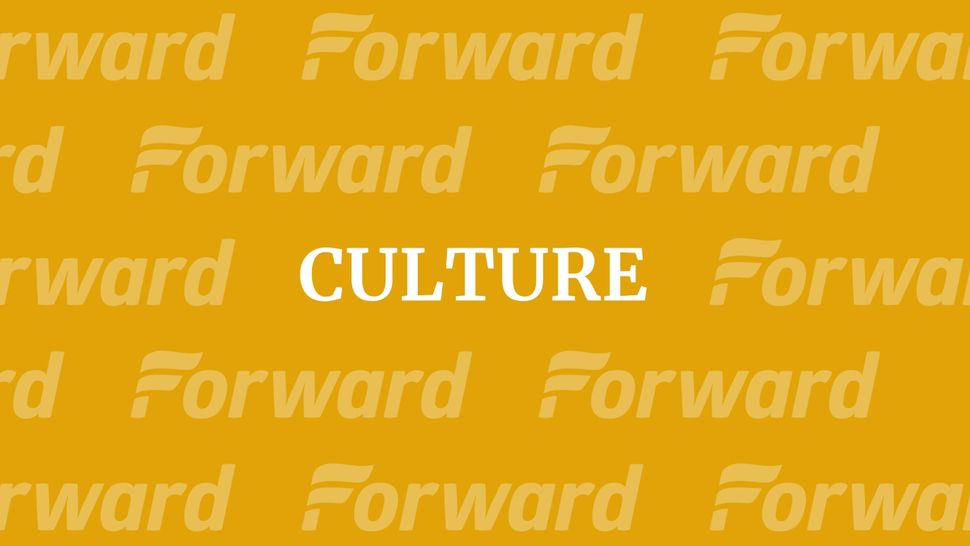Why The Organ Is The Most Jewish Instrument

Secondary keyboard of the organ at the Dohány Synagogue. Image by Wikimedia Commons
To some lovers of classical sounds, organ music seems irremediably goyish, despite outstanding achievements by such Jewish composers as Aaron Copland and Arnold Schoenberg in writing for the so-called “king of instruments.” For these, “The Organ and Its Music in German-Jewish Culture,” recently published in paperback, will be a real ear-opener. Its author, musicologist Tina Frühauf, notes that “until the Middle Ages, the organ was not officially permitted in any Christian liturgy inasmuch as instrumental music was associated… with the Jewish services once held in the temple at Jerusalem.”
Even after organs appeared in churches and became taboo for synagogues, there remained some Jewish fans of organ music, notably the 15th century Italian humanist philosopher Yohanan Alemanno, who in “Solomon’s Desire,” his commentary on the “Song of Songs,” included praise of a performance at the Mantua court by the German organist Conrad Paumann, a touring superstar of the 1400s. By the 18th century Haskalah, Europe’s Jewish Enlightenment movement, the time was ripe for a return of the organ as liturgical instrument. In 1810, at the Jacobstempel synagogue in Seesen, Lower Saxony, an organist named Gerson Rosenstein first participated in services. Debate was sparked and in 1818, Eliezer Liebermann, an Austrian Talmudist, wrote “The Bright Light,” a treatise which argued that organ playing had been the “Jewish custom in the Temple prior to the Christians’ adoption of the instrument.”
Some rabbis worried that if organs needed repair or adjustment on Shabbat, would that qualify as work, and if so, would a Shabbas goy be required to do it? An 1845 resolution decided that according to the Talmud, music-making qualified as a “display of art” and therefore was not work. The Vienna chazzan Salomon Sulzer opined in 1869 that a special virtue of the organ was that it was loud enough to easily “cover dissonances” of inferior cantors guilty of “trivial vocal ornamentations” or “weepy Polish virtuosity,” resulting in “that self-satisfied pseudo-artistry which often attacks esthetic beauty as a mildew attacks a seedling crop and poison it.” In 1933, Berlin organist Ludwig Altman was hired by one congregation only after he proved he could play thunderously enough to drown out a painful-sounding cantor.
Organ playing in European synagogues was violently halted, along with so much else, in 1938, but has enjoyed an afterlife in Israel, where many modern composers, such as Jacob Gilboa, Josef Dorman, and Ari Ben-Shabtai, are inspired by the instrument, even more than in today’s America.
Listen to Aaron Copland’s Symphony for Organ and Orchestra (1924] here.
Listen to part of Arnold Schoenberg’s “Variations on a Recitative for Organ (1941)” here.
The Forward is free to read, but it isn’t free to produce

I hope you appreciated this article. Before you go, I’d like to ask you to please support the Forward.
Now more than ever, American Jews need independent news they can trust, with reporting driven by truth, not ideology. We serve you, not any ideological agenda.
At a time when other newsrooms are closing or cutting back, the Forward has removed its paywall and invested additional resources to report on the ground from Israel and around the U.S. on the impact of the war, rising antisemitism and polarized discourse.
This is a great time to support independent Jewish journalism you rely on. Make a gift today!
— Rachel Fishman Feddersen, Publisher and CEO
Support our mission to tell the Jewish story fully and fairly.
Most Popular
- 1

Culture Cardinals are Catholic, not Jewish — so why do they all wear yarmulkes?
- 2

Fast Forward Ye debuts ‘Heil Hitler’ music video that includes a sample of a Hitler speech
- 3

News School Israel trip turns ‘terrifying’ for LA students attacked by Israeli teens
- 4

Fast Forward Student suspended for ‘F— the Jews’ video defends himself on antisemitic podcast
In Case You Missed It
-

Yiddish קאָנצערט לכּבֿוד דעם ייִדישן שרײַבער און רעדאַקטאָר באָריס סאַנדלערConcert honoring Yiddish writer and editor Boris Sandler
דער בעל־שׂימחה האָט יאָרן לאַנג געדינט ווי דער רעדאַקטאָר פֿונעם ייִדישן פֿאָרווערטס.
-

Fast Forward Trump’s new pick for surgeon general blames the Nazis for pesticides on our food
-

Fast Forward Jewish feud over Trump escalates with open letter in The New York Times
-

Fast Forward First American pope, Leo XIV, studied under a leader in Jewish-Catholic relations
-
Shop the Forward Store
100% of profits support our journalism
Republish This Story
Please read before republishing
We’re happy to make this story available to republish for free, unless it originated with JTA, Haaretz or another publication (as indicated on the article) and as long as you follow our guidelines.
You must comply with the following:
- Credit the Forward
- Retain our pixel
- Preserve our canonical link in Google search
- Add a noindex tag in Google search
See our full guidelines for more information, and this guide for detail about canonical URLs.
To republish, copy the HTML by clicking on the yellow button to the right; it includes our tracking pixel, all paragraph styles and hyperlinks, the author byline and credit to the Forward. It does not include images; to avoid copyright violations, you must add them manually, following our guidelines. Please email us at [email protected], subject line “republish,” with any questions or to let us know what stories you’re picking up.
















